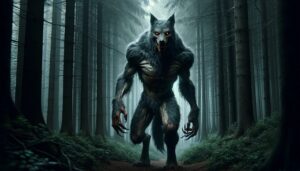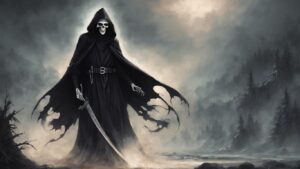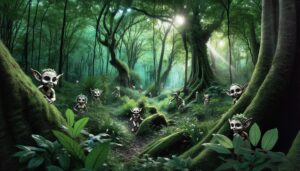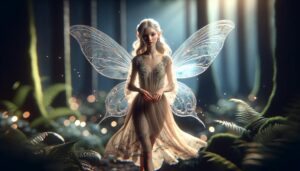Table of Contents
The Leprechaun, a beloved mythical creature from Irish folklore, has charmed and intrigued generations with its tales of mischief and hidden pots of gold. In this comprehensive article, we will explore the origins, appearance, abilities, myths, and stories related to the Leprechaun, delving into the rich tapestry of Irish folklore and unraveling the mysteries surrounding this enigmatic creature.
Origins
Ancient Celtic mythology traces the origins of the Leprechaun, believing it emerged as a type of faerie or spirit associated with the natural world. Over time, Irish folklore transformed the Leprechaun into a distinct character embodying the essence of the mischievous trickster.
Appearance
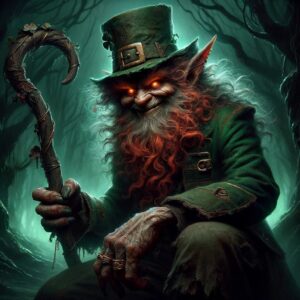
Leprechauns, mythical creatures from Irish folklore, exhibit various characteristics:
They typically have small statures, usually no taller than about 2 to 3 feet (60 to 90 centimeters), which defines their diminutive size.
Artists often portray them as elderly, giving them wrinkled faces and white or gray hair, and sometimes they are shown wearing beards to enhance their aged appearance.
Illustrators commonly depict leprechauns wearing traditional Irish attire, which consists of a green coat and hat, buckled shoes, and occasionally, a red or gold waistcoat. This attire strongly links them to Irish culture.
Artists often render them wearing distinctive pointed hats that may have a buckle or band, contributing to the widespread stereotype of leprechauns.
Leprechauns have a reputation for their affection for shiny objects, especially shoes. Artists often depict them as skilled cobblers or shoemakers who take great pride in their footwear.
Some legends describe leprechauns as having fiery red eyes, lending an unsettling or mischievous quality to their appearance.
While not all depictions include a beard, some illustrations of leprechauns show them with long, white beards.
Abilities

Leprechauns, renowned for their exceptional craftsmanship, especially in shoemaking, are said to produce the finest shoes in all of faerie-kind, according to legend.
Leprechauns possess the ability to become invisible at will, allowing them to evade human detection when they choose to remain hidden.
According to some stories, Leprechauns can change their appearance through shapeshifting, either to avoid capture or to play tricks on unsuspecting humans.
The Leprechaun’s most famous attribute is its association with hidden pots of gold. Legend has it that if someone captures a Leprechaun, they can compel it to reveal the location of its treasure.
Leprechauns are renowned for their mischievous nature, often engaging in pranks on humans and other faeries. They have a reputation for leading travelers astray or stealing belongings for their own amusement.
Myths and Stories
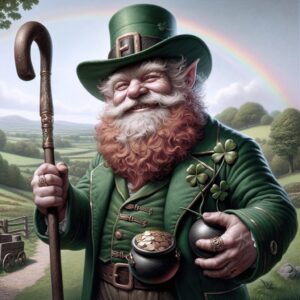
The Capture of the Leprechaun: One of the most enduring tales involves a clever human capturing a Leprechaun and demanding the location of its pot of gold. The Leprechaun complies but manages to escape, leaving the human with only a handful of worthless leaves.
Leprechauns, master shoemakers, are said to offer their craftsmanship to humans in exchange for a bit of kindness or hospitality, according to legend.
Legend has it that Leprechauns hide their gold in concealed pots at the end of rainbows, leaving humans who chase rainbows in search of the treasure empty-handed as it remains elusive.
Renowned for their pranks, Leprechauns engage in activities such as tying knots in the manes of horses, hiding belongings, and causing general mischief in the lives of humans.
Leprechauns are said to reside in secluded forests or woodlands, where they construct their homes underground. They fiercely guard their treasures and protect their homes.
Leprechauns, well-known figures in Irish folklore, receive recognition and celebration during festivals such as St. Patrick’s Day. They symbolize Irish culture and folklore.
The Cultural Significance
The Leprechaun holds a unique place in Irish culture and has become an enduring symbol of Ireland itself. It represents the mischievous spirit and resourcefulness of the Irish people, as well as their deep connection to the land and nature. The Leprechaun’s association with hidden treasure speaks to the allure of the unknown and the hope for unexpected fortune.
Similarities
Several mythical creatures from various cultures worldwide exhibit similarities with Leprechauns in terms of their mischievous nature, small stature, and folklore associations. Here are a few examples:
Brownies (Scottish and English folklore): People in these cultures often depict Brownies as small, helpful household spirits who perform chores when no one is watching. However, they can turn mischievous if not treated with respect.
In Germanic folklore, people often associate Kobolds with mining activities. These small and impish creatures are known for displaying both helpful and malicious behavior, which depends on how they are treated.
In Scandinavian folklore, people believe that Tomte/Nisse, gnome-like creatures, protect farms and offer assistance. However, they may play tricks if not appeased properly.
Puck (English folklore): Puck, also known as Robin Goodfellow, is a mischievous fairy or sprite renowned for playing pranks on humans.
Clurichaun (Irish folklore): Clurichauns, similar in appearance to Leprechauns, are famous for their love of alcohol. They are often portrayed as drunken, troublesome creatures causing havoc in wine cellars.
Dwarf (Norse mythology): Dwarves in Norse mythology are skilled craftsmen who are often depicted as small, bearded individuals. While they are not typically mischievous, they do have their own set of unique characteristics and behaviors.
FAQ
What do Leprechauns do?
Leprechauns are known for making shoes, hiding pots of gold, and playing tricks on humans and other faeries.
Are Leprechauns real?
No, Leprechauns are not real; they exist only in folklore and legends.
Why do Leprechauns hide gold?
Hiding gold is a common trait in Leprechaun folklore, and the gold is said to be a symbol of their wealth and treasure.
Can I catch a Leprechaun?
Leprechauns are elusive and tricky, making them difficult to catch. According to legend, if you capture one, it may grant you a wish in exchange for its freedom.
What do Leprechauns look like?
Leprechauns are often described as small, elderly men wearing green attire, including coats and hats.
Do Leprechauns have special powers?
Leprechauns are said to possess the ability to become invisible and shapeshift, allowing them to avoid capture and play pranks on humans.
When are Leprechauns celebrated?
Leprechauns are most celebrated during St. Patrick's Day, a holiday that honors Irish culture and folklore.
Are there female Leprechauns?
Traditional Leprechaun legends often depict them as male, but some modern interpretations include female Leprechauns as well.
What is the significance of Leprechauns in Irish culture?
Leprechauns are considered symbols of Irish folklore and culture, and they add to the rich tapestry of Irish myths and legends.

